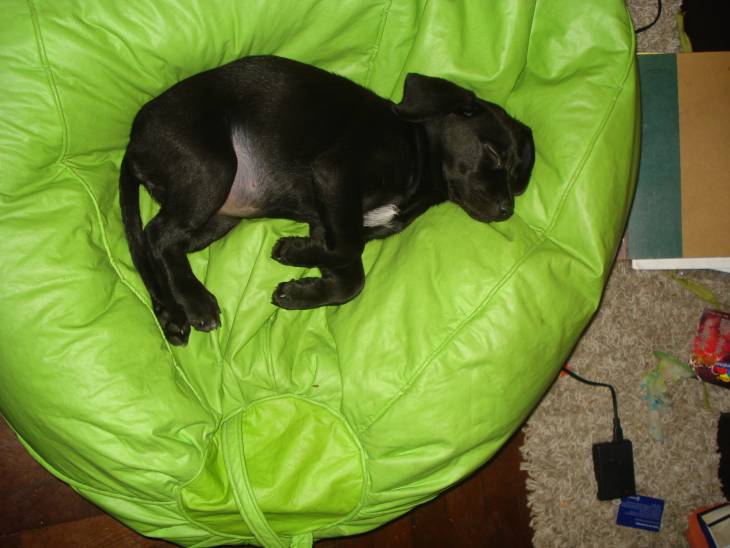The Language Behind Dog Sleeping Positions (Informative Review)
Dogs love their sleep, and they can catch “z’s” just about anywhere they can fit their bodies. They will also slumber in all kinds of positions throughout the day. While a sleeping dog may appear to be cozy, there is more to the way his body contorts than mere comfort.
Dogs Sleep, and they Sleep a Lot

Does it always seem like your pooch is asleep? If so, there’s a reason for that. On average, a dog sleeps between 12 and 14 hours a day, and puppies will sleep even longer.
This doesn't necessarily mean that your pooch is in a constant state of deep slumber. A dog's sleep cycle is broken up into two types of slumber: slow-wave sleep (SWS) and rapid-eye-movement (REM). Typically, when you see a dog fall asleep during the day for a short spell, they are enjoying some slow-wave sleep, which is marked by a lighter form of sleep and less brain activity.
The reason it's not all that uncommon to see a dog sleep at various points during the day is that they don't have a regular sleeping pattern. Unlike humans, whose slumber is in part dictated by a “body clock” known as circadian rhythm, a pooch’s sleep pattern is dictated by the fact that they tend to sleep in shorter periods that can occur throughout the day. These bursts of slumber are needed, too - dogs tend to have fewer instances of REM sleep compared to humans, which causes them to need more rest in general.
Dogs Can Sleep Anywhere!
One of the more fascinating aspects of canine slumber is that they’re capable of falling asleep virtually anywhere. Sometimes, the way they twist and turn their bodies don’t look all that cozy. However, there’s no denying that a sleeping doggie is more often adorable than not, regardless of position.
The Message Behind Your Dog’s Sleeping Position
There are essentially four basic positions a dog will take to sleep. These positions aren’t arbitrary. In fact, some positions have direct ties to a canine’s evolutionary roots.
The most inherent sleeping position for a dog is to curl up in a ball. While it’s thought to be the least restful position for them, they practice this position because it protects their body and helps them retain heat. These functions hearken back to your dog’s wild ancestors, where such tactics helped them ward off predators and stay warm outside.
On the other hand, a dog sleeping on his back is a clear sign that he feels safe and sound in his environment. You’ll see more indoor dogs revert to this position than outdoor dogs because the comfort of the space you created for him allows him to let his guard down. It's also considered to be the most comfortable and restful position for a dog.
Another position that conveys a similar message of security is sleeping on one side. Like sleeping on the back, it is considered to be a very restful position. It also one that demonstrates their confidence in knowing that they won’t have to fend off a predator or have to move at a moment’s notice.
The other chief sleeping position a dog will take up is sleeping on its stomach. While a sleeping dog will be getting rest in this pose, he’s also putting his body in a place where he can spring into action very quickly. While this maneuver can be linked to a dog's ancestor - they'd be able to up and move at the first sound of a threat - this position allows him not to miss whatever interesting thing you may be doing.
Your Dog’s Sleeping Position Could be Dictated by the Relationship You and Him Enjoy
If it’s common practice to see your pooch sleeping on his side or sleeping on his back, give yourself a hand. You have successfully created a wonderfully snug environment for your pooch; one where he is filled with confidence that no harm is going to come his way while he falls asleep. If you see your dog sleeping in a ball or on his stomach, don’t fret - it’s a matter of instinct on their part, and some old habits die hard.

